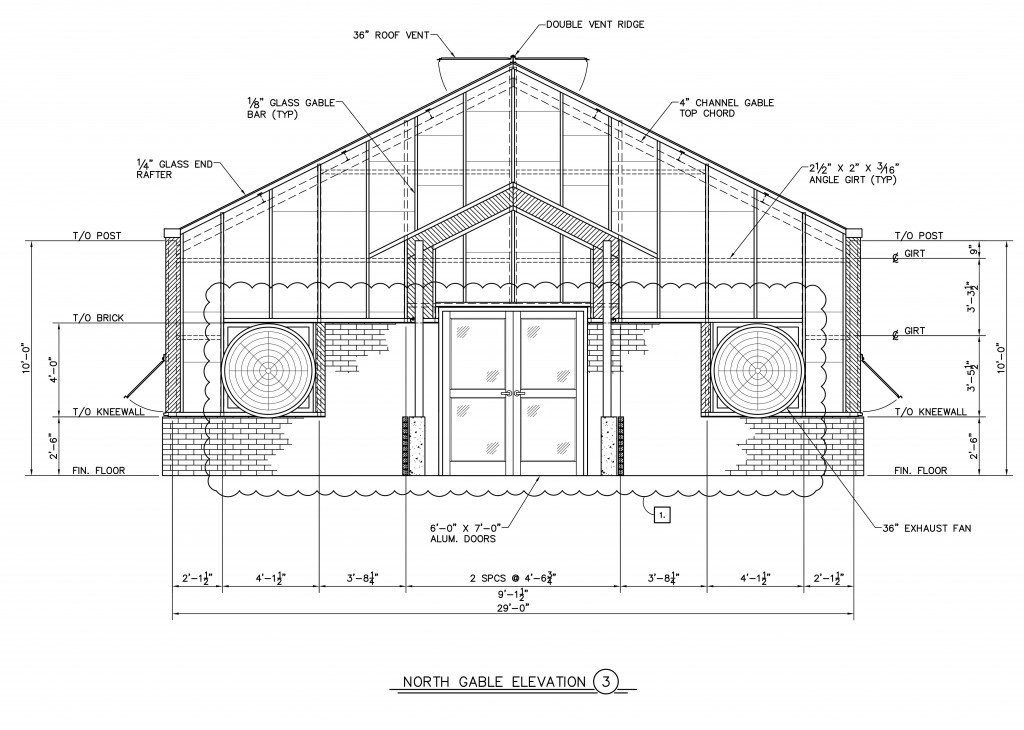LET THE CONSTRUCTION BEGIN!
Hey, it looks like winter is finally showing up. I don’t mind seeing the snow, but I’m not real excited about the cold temperatures. Spring will be here soon...right?! Until then, we can get ready for good things to come.
The New Year is always about change. Lose weight, get in shape, spend less time on your phone, spend more time in a book... all kinds of new plans get made this time of year. Well, we’ve got a plan over here at the garden center, too, and it’s a big one.
(Drumroll, please....) We’re building a new greenhouse!
Now, adding new greenhouses is something we’ve done before, but this one is going to be different...a lot different. This greenhouse is going to be much bigger and nicer! The new structure will stretch out from the back of our store and will provide greater functionality throughout all four seasons. It will replace our old lath house and the adjoining shade structure. If you’re not quite sure which was our lath house, it was the structure behind the store, where we displayed our flowers for the last sixty plus years. The adjoining shade structure was the home of our shade perennials. Both of those structures are now gone!
Cameron Rees, General Manager
The process started back in November with the bulk of the demolition taking place a little before Christmas. It’s amazing how quickly years of work can be torn down. My office window now looks over an unobstructed view of the newly vacated space. It’s a little weird! It’s also exciting!
New construction should start soon, and the new structure is targeted to be up and in use by the spring season. We just need some more of that nice weather we had back in December!
We’ll keep you updated on the progress, but if you’re interested in checking out the changes for yourself, stop on by. We’d be glad to see you!
In the meantime, stay warm and start hatching your plans for the upcoming growing season. And don’t forget to call us with your questions along the way.
Happy New Year!
— Cameron Rees
“thymely” advice: it’s time to start starting
It’s time to start those seeds!
People often wonder, what’s the best way to start seeds? Or how do you even begin? I’m here to help! Follow along below as I lay down some basic information on the when, how, and what of seed starting, so that you can get your growing going.
When to Plant:
It’s essential to sow seeds at the correct time. We don’t want to get too far ahead of ourselves! Sow too early, and the plants may have outgrown their pots before the weather has warmed up enough to plant them outside. But start seeds too late, and they won’t have enough time to reach maturity before the end of the growing season. It’s a delicate balancing act, but hopefully this advice will help. Typically, you would want to start things like peppers and herbs in early February; Lettuce, broccoli, and cabbage mid-February to early March; and cucumbers, cauliflower, cantaloupes and brussels sprouts early-March.
There are some great benefits of starting your seeds indoors. First, it gives you a head start on the growing season, which can lead to a better harvest.
Second, some seeds such as brussels sprouts, cabbage, broccoli, and those beautiful tomatoes, actually do better starting indoors. They can’t be planted too early in the spring, as the soil is too cool, therefore it is better to get these started indoors and transplant them into your garden when the soil is ready.
Most importantly (or at least for me), seeds are much less expensive than buying plant starts.
You will need a good seed starting mix, containers or flats, and a strong light source. Generally, an all-purpose potting soil will do (Fertilome Ultimate Potting Mix). For small or delicate seeds, it’s better to use an actual seed starting mix (Fertilome Seed & Cutting Mix).
When choosing a container, there are a few options. You can use a large pot which will allow you to germinate many seeds and then transfer every single seedling. A plug tray, on the other hand, is flatter with individual pockets for each seed. And then there are the tried-and-true recycled pots. These can be anything from old yogurt containers to other pots that you have previously used.
There are also some seeds that prefer to be seeded directly into your garden instead of seed starting indoors. These seeds do not tolerate transplanting very well. Things like carrots and radishes do best this way.
Now to the How:
To begin, you’ll want to fill your chosen container full of potting mix and tap down to settle. Use your finger or the eraser-end of a pencil to poke planting holes in the mix. Be sure to sow the seed at the depth listed on its packet. Cover your seed with potting mix and label each container to identify seedlings when you are ready for transplanting.
Next, water the containers carefully, using a watering can with a fine sprinkling head. Then leave the plants to drain from the surface and repeat. You want to wet the mix well in the first watering of the container because this wakes up the seed. You can also speed up germination by having warmer soil. Refer to your seed packet for the best germination temperature. A nice soil thermometer is good to use to get an accurate reading. And we stock warming mats at the store if you’re looking for one.
Keep seedlings well hydrated and in a well-lit area where it remains warmer. In a few short weeks, you will begin to see the fruits of your labor. For your crops to flourish, the only thing left to do is to transplant them into your garden bed.
As always, we’re here to help with any questions, large or small. Stop in today to grab all your seed-starting tools and let us help you make your garden happy and full.
View the full seed starting schedule for Kansas at
https://www.centralkansas.k-state.edu/lawn-garden/seedstarting.html
8 TIPS FOR winter houseplant care
Did you know that the care you give your houseplant in the summer differs significantly from that in the winter? Here’s a list of 8 things to keep in mind when caring for your houseplant in the winter.
There is less sunlight in the winter which will mean your plant isn’t getting the same amount of light as it was in the summer... which also means it won’t dry out as fast. Water your houseplants less frequently in the winter. Stick your finger in the soil about an inch down. If it's dry, go ahead and water. If it's not, wait a couple of days and check again.
Less sunlight in the winter means you may need to move your plants so that they can get a little more light. However, be careful not to place them directly in front of the window (see next bullet point).
Watch where you place your plants inside. You don’t want to place them near a drafty window or a door that is opened and shut often. Also, don’t place them next to a vent. This will cause them to dry out.
Your houseplants are taking a little break in the winter, meaning they aren’t growing much, or at all. Therefore, fertilizer is not needed in the winter months. It’s best to stop fertilizing in the fall and resume again in the spring.
Unfortunately, with winter comes the potential for pests. Pests are easier to control when your plants are outside, or you can take them outside to treat. The winter months bring spider mites, fungus, gnats, and mealy bugs. All of these are easy to treat when caught early, and treating with neem oil or insecticidal soap is the safest option for indoor use.
Winter brings dry air, and we all know that most houseplants come from tropical regions with high humidity. A couple of quick ways to rev up humidity - Cluster your plants together so that when their combined soil moisture evaporates, it will create a small environment with humidity. Place your plants on pebble trays. These are simply trays filled with small pebbles and water. Make sure your plant is above the water level to avoid root rot. The plant can take in the moisture from the root area and also from the evaporation of the water into the air.
Your house gets dusty in the winter, so make sure you clean off your plants with a damp cloth.
Try and avoid re-potting in the winter. The best time to re-pot is in spring or summer when your houseplants are actively growing.
— Misty Brown, Lath House Manager, Skinner Garden Store





